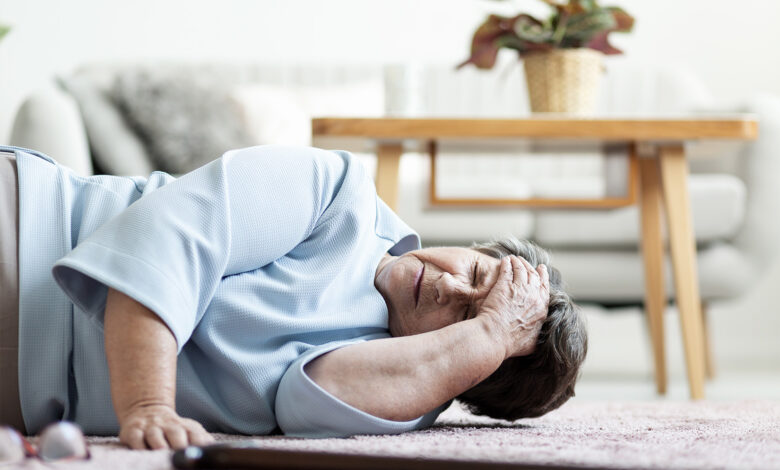PREVENTING FALLS

The United States Preventive Services Task force (USPSTF) is front and center once again. This time with good intentions and good advice. Adults over age 65, simply because of age alone, have a high frequency of falls, some of which have serious long term consequences. The task force has come up with an extensive list of interventions to be employed by senior citizens to reduce the risk of serious falls and the injuries resulting therefrom. These interventions are designed to be used by “community-dwelling older adults,” the folks who live next door.
Being physically fit is the most important of the factors employed. Exercise programs that focus on improving gait and balance and other functional problems, are foremost. These exercises help patients stand, sit, and walk more steadily and more securely. Strength training, resistance exercises, and flexibility training all help gait, balance, and endurance.
Correcting vision issues, postural blood pressure fluctuations, and medication-induced problems are very important for stability, as well. In most cases these are easily correctable circumstances. If Cognition and psychological problems are issues, little will change. But a concerned, cooperative patient and family can moderate these problem.
Screening for and treating osteoporosis helps to prevent serious injury if other physical preventive measures fail. Calcium with vitamin D and/or bisphosphonate drugs will strengthen osteoporotic bones and prevent serious injury, but won’t prevent falling. Removing throw rugs, leveling floor surfaces, grab bars, and just about any device used to stabilize our gait and prevent tripping can be helpful. Being active, strong, and exercising regularly are the things that help the most, however.
These interventions are largely common sense and work best in a motivated patient. Complacency, sedentary lifestyle, and inattention are all at work in a distracted, weak, and groggy patient. Bad outcomes are almost always the result. So be active, be alert, and be safe, and do the things recommended to prevent falls. A fall with injury is often the beginning of the end for the elderly.
Reference: USPSTF “Interventions to Prevent Falls in Community-Dwelling Older Adults” Am Fam Phys 2024 August;110(2):191A-191B.
AFP Clinical Answers “According to the USPSTF, what is the recommended intervention to prevent falls in community-dwelling older adults?” Am Fam Phys 2024 August; 111(6):492.i





Tai Chi is helpful, as well. Unfortunately, most of my students don’t practice every day, so the benefits are negligible.